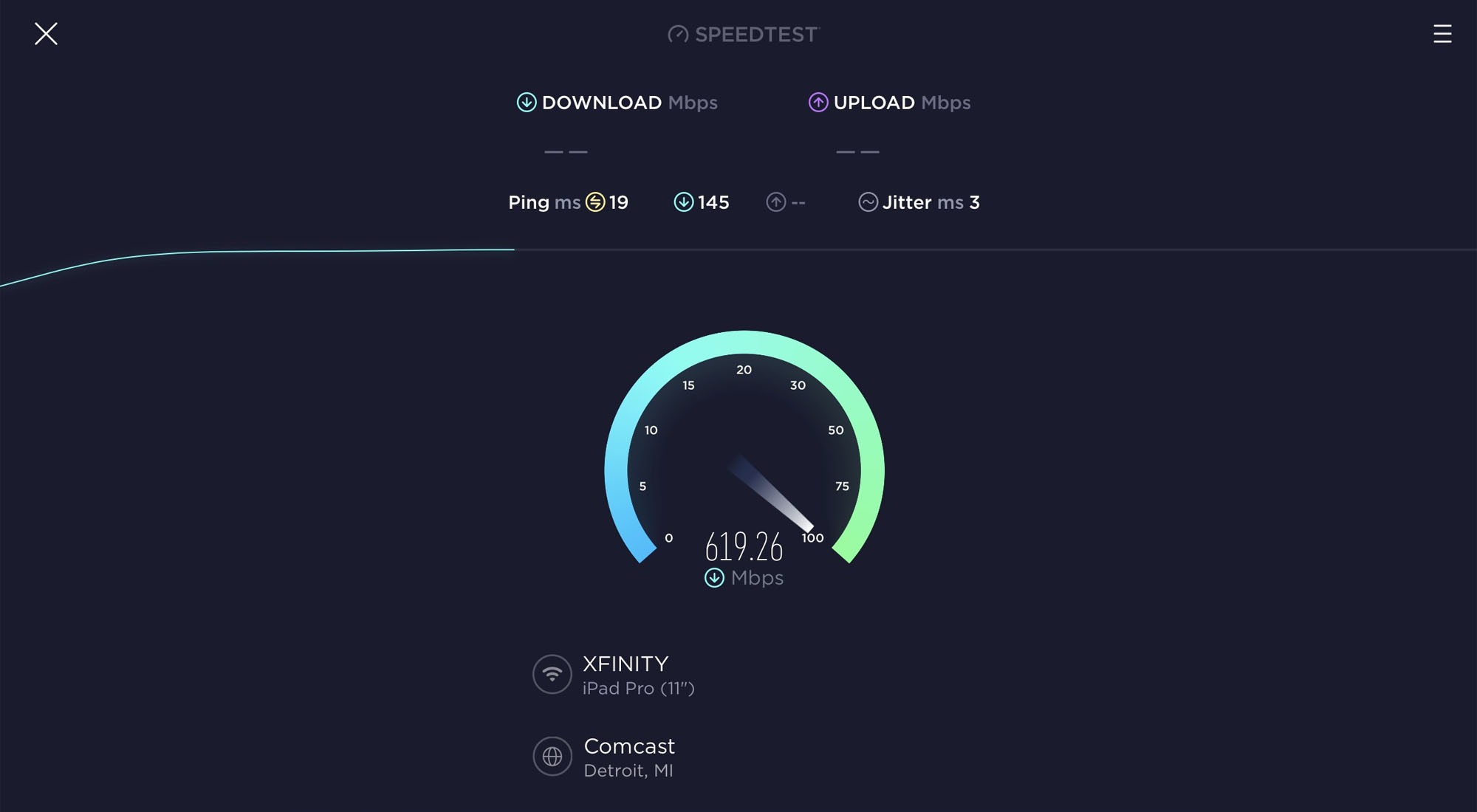Internet service is about to change. Frontier is building a fiber-optic network that will reach about 5,000 customer locations in Columbia Township. Only a small portion of Clark Lake is included. Why is this be a game-changer for some residents? Previously, high speed internet was limited primarily to one company, Comcast. Frontier’s entry into the high speed world changes that.

If you recently observed crews along Jefferson Road digging trenches and unwinding large spools of orange cable, you witnessed the installation in action.
Using the example of one Comcast customer at Clark Lake puts high speed internet into perspective. This customer has download speeds of 600 mbps (megabits per second), which is very fast. Frontier’s new fiber optic service will offer speeds of up to 2 gbps (gigabits per second), over 3 times as fast. Many people are at 25 mbps download. Some who use DSL service, may receive only 6 or 7 mbps.
In addition to internet, Comcast also offers cable TV, home security, and telephone. They typically attempt to bundle those services. Frontier says it’s up to the customer to decide how to use their service. What is that in most cases? Video streaming services like Netflix uses lots of resources. Higher speeds lessen or ends buffering and simultaneously enhance voice, audio, data or games. The speed measure is also indicative of what happens if several people in a household are making demand on resources at any given moment. The more speed, the fewer problems for multiple users.
Hayley Hoefer of Frontier says their system is symmetrical. The means if you upload photos or video to the internet, it goes at the same speed as the download. For the Comcast customer above, 600 download is balanced against 24 upload. That means an upload of video, photos or other large files is noticeably slower than downloads.
One of the catches in fiber installations is what’s referred to as the last few feet. In other words, if high speed fiber optic service runs along your road, how does it get from that location to your house? Will it be slowed by going through traditional copper cable? Hayley Hoefer says Frontier will run fiber to the house, which the customer can connect directly to his or her router.
Frontier will activate the new network as it is completed, rather waiting for all construction to be finished. This means residents will be able to begin subscribing to the advanced service later this year. Frontier expects to finish work by the end of the year or early 2023.
Networks have traditionally been built with copper cables. Fiber optic cable uses glass filament instead of copper. If you’d like to take a deeper dive into the technical advantages of fiber over copper, here are some points, courtesy of Frontier:
- Fiber internet is more secure and reliable than copper; with fiber cables, data can be sent much farther while maintaining signal strength.
- Fiber can handle multiple wavelengths to provide faster upload and download speeds, starting with speeds 25x faster than cable up to 75x faster.
- Fiber-optic cables are designed to survive Mother Nature; their protective covering makes them weatherproof and temperature-proof.
- Fiber is more energy-efficient and helps significantly reduce greenhouse gasses.
- Frontier is using the most advanced technology available today, and this network is scalable – meaning it is capable of even faster speeds in the future as the demand for faster speed increases.
Want to test your current internet speed? Here’s how. Clicking on this link will take you to speedtest.net. Once there, click the button that says GO, and you’ll get your download speed and upload speed. The lower the “ping” number, the better. As an alternative to speedtest.net, you Google speed test (two separate words and follow the instructions).












Who at clarklake will be able to access this?
That’s great but they’re adding boxes in parking areas in front yards with not one word to property owners..they dug up my permanent metal survey marker and just placed the top piece in the ground. And not in right spot. A 17″x 30″ plate is set right in the middle of parking area on neighbors lawn. Township said call Road Commission. Road Commission said they were not suppose to go in easement. But then said call Frontier. Ummm what? Were permits not pulled? I’m all for competition but it’s crazy what they’re doing under brand new poured driveways. That doesn’t even bother me much but the worker was standing in a hole up til his hips literally in the very edge of new driveway. Neighbor planned on finishing front driveway right where this plate is which was told is where a box will go. Furthermore I went out to consultant for the project who said he was giving his direction not to do on Russell ct. Where so much new concrete has been poured. He said they should do it on Ocean Beach. The next day crews were tearing up front yards. To be clear, I don’t usually raise and beef with progress or changes that are inevitable. But this is just really bizarre and completely unsupervised.